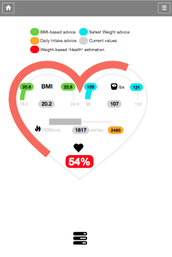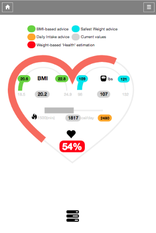Editorial articles - Year 2021
Losing 80 Pounds in Just a Few Months
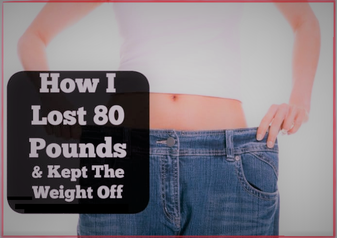
Obesity / overweight problems are the # 1 cause of death in many countries, particularly in USA.
There are many ways to approach weight loss. Some ways involve spending quite a lot on gym memberships or nutrition specialists. Others may involve spending nothing but your courage to do so.
But other not very popular ways to approach weight loss are actually quite effective, and may even be faster and produce amazing results.
Stress and Weight Gain - Part 2

How your body and mind understand the states of "emergency"
Stress can cause weight gain, they are both related to each other, like "cousins". In the first part of this series, we explored a very common psychological reaction to stress – emotional eating. Now, we dive into a physical response, triggered by the hormone cortisol.
Stress and Weight Gain

How your mind and body interpret your states of "emergency"
Stress and weight gain often go hand in hand, so understanding your behavioural patterns in stressful situations can do wonders for your waistline, as well as your general health and wellbeing.
We live in a stress-full culture, so it is understandable if the efforts necessary to maintain or obtain the “perfect” weight and body shape just seem impossible sometimes. We should also reject all the body-shaming we “normal” people face – and subject ourselves to – when compared to the “beautiful” people championed by the media. Our cultural standards of beauty are often unattainable and just become another source of chronic dissatisfaction and stress. However, rejecting harmful standards doesn’t mean we should also reject sensible health recommendations. There is a proven link between chronic stress and weight gain, as well as a serious illness.
Turmeric: A Beautiful Gift Of Nature
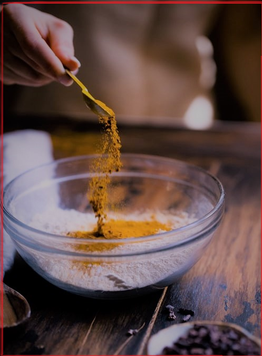
Spices are a vital element of many Asian countries. Back in time, our ancestors´ diet was based on natural and whole foods given by the Mother of Earth. Medicine was far too expensive to afford and, therefore, food of nature became a natural cure to any upcoming health issues or concerns.
But what is turmeric?
Turmeric is an enhancing plant that belongs to the ginger family. It is a must in Asian food, and the key ingredient of delicious curries, providing food with a fantastic look and flavor. It is a warm spice with a slightly bitter taste, and just a little of it gives a tremendous color and life to all food.
The many Benefits of Omega- Fatty Acids

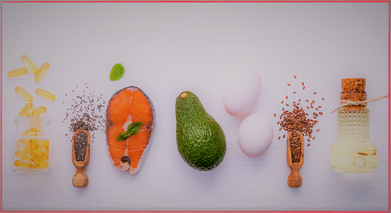
A true wealth of nature is Omega 3. It offers us many benefits and helps us lead a healthy, dynamic and energetic life.
Omega-3 fatty acids can be found in foods, such as fish as well as dietary supplements in the form of fish oil. There are 3 main types of omega-3 fatty acids: alpha-linolenic acid (ALA), eicosapentaenoic acid (EPA), and docosahexaenoic acid (DHA). ALA can be found mainly in flaxseed, soybean, and canola oils.
Los Beneficios de La Canela

Nos enamora la canela. Combina muy bien con cualquier ingrediente y en cualquier plato. Se trata de una especie antigua, con un color bello y especial, un aroma difícil de olvidar y una textura suave y delicada. Se ha usado mayormente en la gastronomía por la multitud de beneficios que aporta, así como por la huella particular e única que deja.
Adelgaza Con el Té Verde

Contamos con una variedad de tés muy enriquecedores que aportan positivismo a nuestro cuerpo y nuestra mente. Entre otros, el té verde es uno de los tés más conocidos y disfrutados en el mundo. El té verde se obtiene de las hojas y los cogollos de Camellia Sinensis pero, en el caso del té verde, este no se ha sometido al proceso de marchitamiento y oxidación utilizado para elaborar otros tipos de tés. El té verde es originario de China, pero su producción y fabricación se ha extendido ampliamente a otros países de Asia.
Una Buena Relación con los Alimentos

Nuestra relación con los alimentos que ingerimos es muy importante.
Cada cuerpo asimila y le da la bienvenida a los diversos alimentos de una manera distinta, y es importante lo que nos hace bien y lo que no. Lo que funciona bien para uno no tiene porque funcionar de la misma manera para el otro. Es más, esto es lo que se conoce como nuestra autenticidad y nos hace únicos e especiales.
Y También Necesitamos Grasas

Existe un miedo tremendo a la palabra "grasa" y los alimentos que la contienen. La grasa no es mala ni nos hará subir de peso. No hay alimento que por sí sólo nos ayude a bajar o subir de peso. Se trata de encontrar el equilibrio adecuado, incorporando todas las riquezas ofrecidas por el universo en porciones adecuadas y estables.

La Importancia del Movimiento


Tal y como no hay una dieta que sirva para todos, tampoco existe un ejercicio o deporte que sea disfrutado por todos.
Cada persona es un mundo a descubrir y explorar, y es bello saber que cada uno de nosotros funciona diferente y de manera única e especial. Es una manera de conocernos mejor, de experimentar con nuestro cuerpo y entender lo que le hace feliz, lo que necesita y lo que se merece.
Building a Healthy Relationship with Food

Our relationship with the food we eat is very important
Each body assimilates and welcomes various foods differently, and it is important to understand what is good for us and what is not. What works well for one does not have to work in the same way for the other. What is more, this is what is known as our authenticity and it makes us unique and special.
La Magia del Jengibre

Una belleza de la naturaleza
Los amantes del jengibre usan esta maravilla de la naturaleza en la cocina y también como medicina desde la antigüedad. El jengibre es bien conocido como remedio casero para problemas de salud como: náuseas, dolor de estómago y otros.
El jengibre generalmente se usa en su versión fresca o seca para cocinar, y otras personas lo toman como suplemento por sus posibles efectos positivos sobre la salud.
The Importance Of Moving

Just as no diet works for everyone, there is no move, exercise, or sport that is enjoyed by everyone. Each person is a world to discover and explore, and it is beautiful to know that each one of us works differently, uniquely and in a very special way. It is a way of knowing ourselves better, experimenting with our body, and understanding what makes it happy, what it needs, and what it deserves.

La Importancia De Un Buen Sueño

La magia del dormir y el descansar bien
Existe el temor de que si el cuerpo descansa y duerme demasiado, el cuerpo se volverá más perezoso. Sin embargo, la grelina está estrechamente relacionada con el hambre, mientras que la leptina se relaciona con la sensación de saciedad y satisfacción. Se ha descubierto que la falta de sueño aumenta los niveles de grelina, lo que lleva a la necesidad de comer. Pero, ¿qué son la grelina y la leptina?
La leptina, una hormona producida por nuestras células grasas, minimiza nuestro apetito. La grelina, por otro lado, es una hormona que aumenta el apetito y juega un papel clave en el peso corporal. Ambas hormonas trabajan en armonía, asegurando un equilibrio entre toda la energía que fluye por el cuerpo y la mente.
No Te Saltes El Desayuno

No dejes tu desayuno atrás
¡Inclúyelo y disfrútalo!
Siempre tendemos a escuchar que el desayuno es la comida más importante del día, y no debemos perderlo en absoluto. Pero ... ¿es elemental para nosotros?
Varios estudios destacan que desayunar a diario puede ayudar a mantener / perder peso. Cada cuerpo es un mundo por descubrir, y cada cuerpo trabaja de manera diferente. Puede haber una persona, por un lado, que necesite comer tan pronto como se despierte; sin embargo, por otro lado, es posible que otra persona no se sienta cómoda comiendo de inmediato y necesite algunas horas más de ayuno.
The Relation Between Sleeping and Having a Healthy Weight

There is an important relation between sleeping and maintaining a healthy weight. There is a strong belief out there that to have a beautiful and healthy weight, an individual should be highly active and keep the body loaded with tasks and activities for the whole day.
You will be surprised to know that, our body burns calories while sleeping and resting too!.
La Relación Entre Sueño Y Peso Saludable

Hay una relación muy importante entre un buen hábito de sueño y mantener un peso saludable. Existe una fuerte creencia de que para tener un peso hermoso y saludable, una persona debe ser muy activa y mantener el cuerpo cargado de tareas y actividades durante todo el día.
¡Te sorprenderás de saber que nuestro cuerpo también quema calorías mientras duermes y descansas.
Una Familia Sana Es Una Familia Feliz

Mary L. Gavin (2018) comenta que evitar que los niños tengan sobrepeso significa tomar decisiones sobre la forma en que su familia come y hace ejercicio, y cómo pasan el tiempo juntos. Ayudar a los niños a llevar estilos de vida saludables comienza con los padres que predican con el ejemplo.
Cada vez son más las mujeres que se incorporan al mundo laboral. El estilo de vida se ha vuelto muy agitado tanto para hombres como para mujeres, al no poder llegar a todas partes. Como resultado, los padres no pasan suficiente tiempo de calidad con sus hijos. La falta de atención y conciencia puede afectar el desempeño cognitivo de un niño, así como su salud mental y emocional.

Necesitamos Carbohidratos

Necesitamos carbohidratos. No les temas. En cambio, ¡ámalos e incorpóralos en tu vida!
Los carbohidratos han sido un factor de miedo en la vida de las personas. He escuchado muchas declaraciones como "los carbohidratos engordan", "los carbohidratos no son buenos después de las 7 pm", etc.
Es realmente triste escuchar que el principal combustible de nuestro motor está siendo rechazado y eliminado de la dieta. Nuestro cuerpo funciona como un coche. Requiere una potencia y una contribución específica para trabajar y dar lo mejor de él. Nuestro combustible líder y más prometedor son los CARBOHIDRATOS. La calidad de energía que los carbohidratos pueden ofrecer no se puede reemplazar con proteínas o grasas. Los carbohidratos por sí solos no pueden hacerte subir de peso. Siempre depende de la calidad de los alimentos que incorpores a tu dieta. No existe un alimento mágico que te haga subir de peso, así como adelgazar. Se trata de tener el equilibrio adecuado.

La Música Mejora El Rendimiento Físico

Sigue el ritmo, siente cada parte de tu cuerpo moverse, respirar y vivir.
Así como no existe una dieta única diseñada para todos nosotros; no existe una forma específica o correcta de ejercitar y entrenar nuestro cuerpo. Sin embargo, muchas personas disfrutan de su entrenamiento con cierta música de fondo, lo que les ayuda a sentirse motivados y con ganas de dar más de sí mismos.
La música crea una "respuesta de ritmo", dice Scientific American.
Cúrcuma: un regalo de la naturaleza
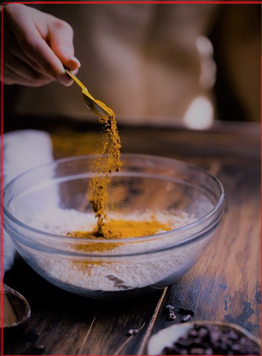
Las especias son un elemento vital de muchos países asiáticos. La dieta de nuestros antepasados se componía de alimentos naturales e integrales ofrecidos por la Madre de la Tierra. La medicina era demasiada cara para comprar y, por lo tanto, la comida de la naturaleza se convirtió en una cura natural para cualquier problema o inquietud de salud que se avecinara.
Pero, ¿qué es la cúrcuma?
La cúrcuma es una planta potenciadora que pertenece a la familia del jengibre. Es imprescindible en la comida asiática y el ingrediente clave de los deliciosos curries, proporcionando a los alimentos un aspecto y un sabor fantásticos. Es una especia que aporta calor al cuerpo, con un sabor ligeramente amargo, y solo un poco de ella le da un color y vida tremenda a todos los alimentos. Sin duda, todo un regalo de la madre naturaleza!
El Secreto De Un Peso Saludable
4 pasos para reprogramar el lipostato
Por fín estamos obteniendo las respuestas al gran misterio ...
¿Por qué a algunas personas les resulta casi imposible perder peso, a pesar de sus numerosos y serios intentos de adelgazar incluso con dietas sofisticadas, ejercicio, píldoras, etc.?
Lo que hemos aprendido de la ciencia le podría sorprender ...
La Ideal Ingesta Diaria De Calorias

¿Cuántas calorías al día debo consumir?
Estoy seguro de que esta es una pregunta que todos nos hemos estado planteando alguna vez. No existe una respuesta tan exacta que funcione mágicamente para todos, pero, en términos generales, dentro de una dieta sana y equilibrada, en los hombres se recomienda una ingesta calórica diaria de alrededor de 10,500kJ (~ 2,500kcal) al día para mantener un peso saludable. Para las mujeres, esta cifra, ronda los 8.400kJ (~ 2.000 kcal) al día. Sin embargo, estos valores varían en función de la edad, el metabolismo y los niveles de actividad física, entre otras cosas.
El Equilibrio Adecuado Entre Fitness y Dieta

Es lunes por la mañana. Es un gran día para ir al supermercado, comprar algunos alimentos y preparar algunas comidas para esta semana. Si crees que esto te ayudará a encaminarte, te recomiendo que lo hagas hoy o, tal vez, el domingo si estás bastante ocupado durante los días de semana. Personalmente prefiero cocinar más comida a la hora del almuerzo, y comer lo que sobre durante la cena. Lo que sea que funcione mejor para ti.
Aquí hay un secreto para bajar de peso que nunca debes olvidar ... "No hay secretos mágicos. Deja de comer basura y muévete".
Zanahorias (Verduras): La Mejor Compañía Para Salud y Adelgazamiento

Las zanahorias son ricas en nutrientes, con un impacto beneficioso e enriquecedor sobre el organismo, especialmente en la vista. Ya sean crudas o cocidas, integradas y bienvenidas en su comida, las zanahorias son el tipo de alimento que definitivamente puede ayudarle a alcanzar sus propósitos de salud y para perder peso. La zanahoria se considera como el "compañero alimenticio perfecto" que le servirá de compañía durante su trayectoria para alcanzar y mantener su peso más saludable.
Beneficios de las zanahorias
- Potente antioxidante. Las zanahorias son una de las fuentes naturales más ricas en betacaroteno, importante provitamina que, después de consumirla, se convierte en uno de los antioxidantes más poderosos del cuerpo, la Vitamina A. La Vitamina A ayuda a las células a fortalecerse y luchar contra los virus, apoya la lucha contra el cáncer y previene las enfermedades cardiovasculares.
La Magia Del Aceite De Oliva

Siendo de origen español mis compatriotas se decepcionarán si no dedico uno de mis blogs a esta maravilla de la naturaleza. El aceite de oliva, rico en ácidos grasos monoinsaturados, es un componente importante de la dieta mediterránea. La población mediterránea tiene una mayor esperanza de vida y cuenta con menores riesgos de enfermedades cardíacas, hipertensión arterial y accidente cerebrovascular; en comparación con los Norteamericanos y los Europeos del Norte. Los ácidos grasos monoinsaturados (MUFAs) se consideran una grasa dietética saludable, a diferencia de las grasas saturadas y las grasas trans.
¿Qué es el aceite de oliva?
Cuáles Son Los Mejores Suplementos Dietéticos?

Una visita a la tienda naturista puede ser una experiencia única. Es difícil elegir entre la enorme y gran variedad de suplementos dietéticos y nutricionales que hay en el mercado. Desde vitaminas, hasta minerales y píldoras para bajar de peso, hay miles de opciones para elegir a día de hoy. Sin embargo...
¿Realmente necesitas alguno de ellos? ¿Funcionan realmente y, de ser así, cuáles son los mejores?
¿Quién realmente necesita suplementos dietéticos?
10,000 Steps a Day Challenge

The powerful effect of tracking steps!
You are just a few steps away from reaching your goal, so do not give up!.
Being overweight is not only associated with health diseases but also is a big risk to our mental health. To overcome this situation, you do not need to run a marathon but just go out for a walk. You will attain a good amount of fitness and emotional gains from a small amount of walking on a daily basis. Are you ready for the challenge?
Losing Weight While Gaining Muscle

Many readers have asked me this question: can I lose weight but increased my muscles? the answer is yes but, unfortunately, many times when we try to lose weight, we may end up having less muscle mass than when we started out. And sometimes we might even find our body fat% increased.
Why is this happening?
Because to lose weight we usually consume fewer calories than we burn, we are indirectly telling our bodies not to care much about muscle mass. This happens because "low calorie" strategies decrease the intracellular signaling necessary for the body to synthesize new muscle proteins.
Weight Loss During Pandemic Times

This COVID-19 (Coronavirus) pandemic is affecting every aspect of our lives: from virtual meetings to telecommuting to go to work and changing meals habit to adapt to compulsory lockdowns. Observing public health measures and reducing exposure to the virus is fundamental to reduce the spread of this virus. While current vaccination programs are making things closer to normality, the current situation is giving us an amazing opportunity to get rid of some extra pounds (kg) and getting back in shape for the coming summer.
Here are some tips to improve our chances of succeeding with our weight loss (getting back in shape) plan.
Weight Loss by Coloring Foods
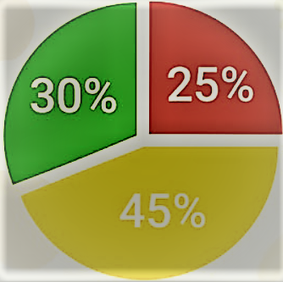
Virtual Personal Trainer's philosophy does not consist of telling what to eat as food choices vary across cultures and personal likes. So, for long-term weight loss and maintenance, I rather recommend to choosing foods wisely. Being more specific, focusing on “calorie density” (i.e. how many calories are contained in a particular meal), can be fundamental for healthy eating and a sustainable Ideal Weight. For example, a full bowl of french fries is much denser and has a lot more calories than a bowl of mandarins because mandarins have more water.
Thus, the idea behind is to color foods by calorie density, using different colors: green, yellow, and red, from light to higher calories, and organizing our meal choices wisely so that we always and unconsciously eat healthily.
From 1 to 100 Push-ups, in a Row - Part 2

In the previous article we tackled how to do push-ups properly, the different kinds of push-ups, how to enjoy doing it, and its benefits. In this section, we move from the theory to the practice, I will review the potential issues we may encounter as well as future steps.
From 1 to 100 Push-ups, in a Row

It was the end of summer and, together with losing a few pounds, going from one to 100 push-ups was my best complimentary fitness goal. But, rather than, how I did manage to do so, some of the most intriguing questions were … How do I know I am doing push-ups correctly?, and how can I, a person who was not a fan of working out at all, make of doing push-ups something that is actually enjoyable?
Weight Loss After Holidays

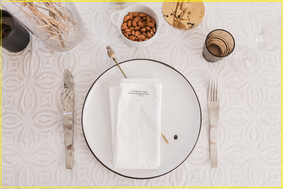
Tips and tricks to (re) encouraging weight loss
It’s a new year, and odds are good that several readers indulged during the holiday season. And why wouldn’t they? Christmas, Thanksgiving, and New Year's Eve are all times when people are expected to celebrate and eat a lot of good food—even if it isn’t particularly healthy. Turkey, honey-glazed ham, sugar-coated walnuts, stuffing, and so on are all common foods readers may have consumed during the later part of the year. There is even a distinct possibility these foods are still laying around depending on how long a family is willing to store leftovers. Similarly, chances are good that readers have abstained from performing certain actions, like exercising, as they prepared and enjoyed the holiday season.
A New Year, A New You

After all the excess of the holiday season, January seems to be the perfect month to start a weight loss goal. And this is because the beginning of the new year is the time when people usually realize that they have gained some weight, and it is time to start losing a few pounds and get ready for the new year ahead. If you are one of these people, then you need to stick to a plan! From a psychological type of view, starting a new year means the beginning of new life experiences, which can add a lot of motivation. If you are all set up to lose weight in 2021, then this is the right article for you. Just follow a few simple tips and soon you will be one that you always wanted to be.




